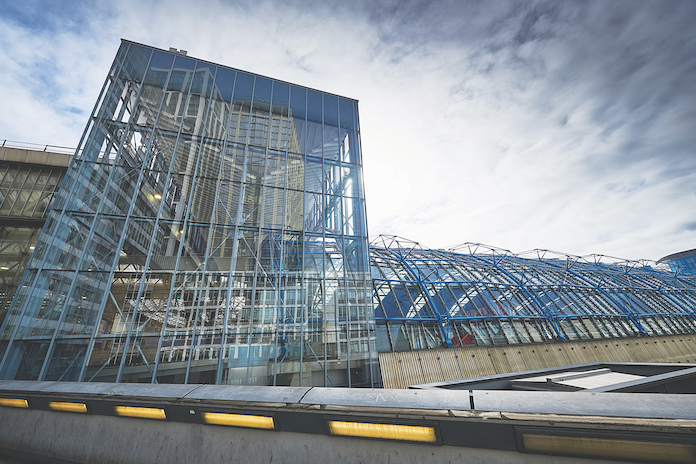
Credit: Michael Cockerham
A steel-framed link connects Waterloo’s former international terminal with the main station
London’s Waterloo Station has been transformed by the Wessex Capacity Alliance’s (WCA) programme of works, which included rebuilding the former international terminal (WIT), allowing its platforms to be brought back into use.
As part of this, an infill roof structure has been delivered, bridging the gap between the three-pin arch roof of Grimshaw’s WIT terminal, and the trussed 1920s steel roofs forming the main station concourse.
The infill roof is a rectangular steel-framed box, 52m long by 18m wide and 26m high at the western end, tapering along one side to accommodate the shape of the former Eurostar structure and oversailing the two station roofs.
It requires two 508mm-diameter circular hollow section (CHS) columns to support it in the middle. As well as providing support to the roof, the CHS columns allow a central area with a 26m clear span. Forming the main span of the roof is a 4.2m deep x 52m long spine truss, weighing 27 tonnes.
The central spine truss supports eight pairs of gullwing trusses sitting perpendicular to the main structure, forming overhangs on either side.
The judges noted that the steel frame, sympathetically designed to reflect the detailing of the existing structure, and ingeniously erected in a live station, facilitates a huge increase in station capacity.
- Commendation: Waterloo Station Roof Infill
- Architect: Aecom
- Structural engineer: Mott MacDonald
- Steelwork contractor: Bourne Group Ltd
- Main contractor: Wessex Capacity Alliance
- Client: Network Rail











